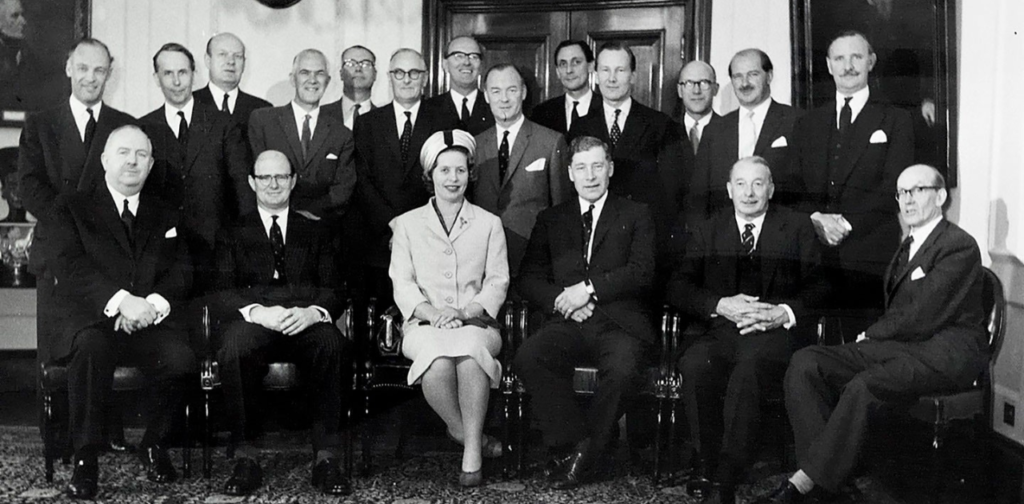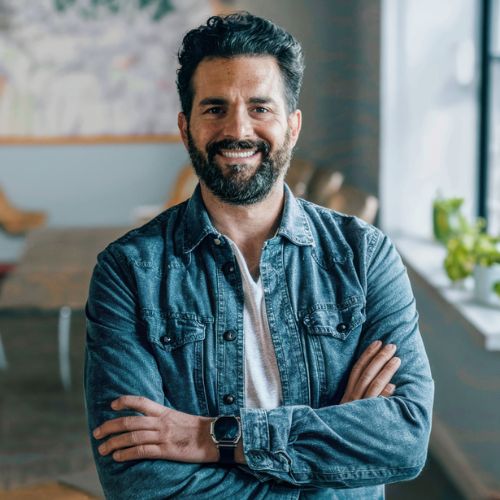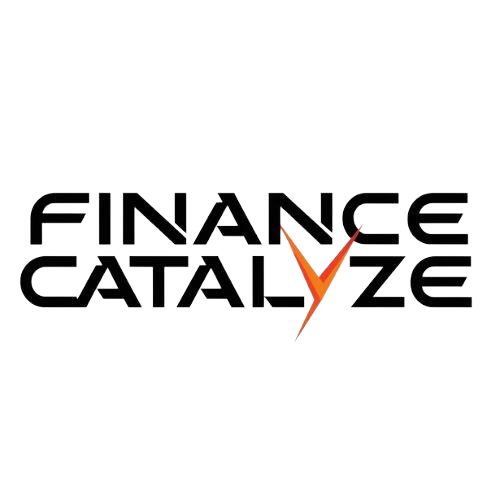For centuries, the world of banking and finance has been a predominantly male-dominated arena. However, a powerful shift is underway as an increasing number of women are shattering the glass ceiling and taking the helm at financial institutions across the United States. The rise of women-owned banks is not just a triumph for gender equality it represents a profound step towards true financial inclusion and economic empowerment for all.
Despite making up over half of the population women have historically faced numerous barriers and challenges when it comes to accessing financial services and leadership roles within the banking industry. From being denied the right to open bank accounts independently to facing discriminatory lending practices the road to financial autonomy has been an uphill battle.
The tides are turning, and women-owned banks are emerging as beacons of change, reshaping the financial landscape and unlocking new realms of possibility.This article delves into the captivating world of women owned banks in the United States, exploring their rich history, their vital importance the pioneering women spearheading this revolution and the promising future that lies ahead.
Breaking Barriers: A Brief History of Women in Banking
The journey of women in the banking sector is a testament to resilience, perseverance, and the relentless pursuit of equality. While the early days were marred by systemic discrimination and societal norms that relegated women to the sidelines, a few trailblazing individuals dared to challenge the status quo.
One such pioneer was Deborah Powers, who in 1877, at the remarkable age of 87, founded D. Powers & Sons in Troy, New York, becoming the first woman in U.S. history to establish a bank. Her remarkable achievement paved the way for future generations of women to envision their rightful place in the financial world.
Another iconic figure was Maggie L. Walker, an African American woman born to a formerly enslaved mother, who defied the oppressive Jim Crow era and founded the St. Luke Penny Savings Bank in Richmond, Virginia, in 1903. Walker’s unwavering determination and activism not only empowered her community but also inspired countless others to dream beyond the confines of societal expectations.
The Importance of Women-Owned Banks

The significance of women-owned banks extends far beyond mere representation; they serve as catalysts for economic empowerment, equal access to financial services, and the dismantling of discriminatory lending practices that have historically disadvantaged women.
- Understanding Unique Financial Needs: Women-owned banks are uniquely positioned to understand and cater to the specific financial needs and challenges faced by women. From navigating the complexities of entrepreneurship to overcoming the persistent gender wage gap, these institutions offer tailored solutions and support systems that empower women to achieve their financial goals.
- Bridging the Lending Gap: Studies have consistently shown that women-owned businesses face disproportionate difficulties in securing financing and access to capital. Women-owned banks are dedicated to addressing this lending gap, ensuring that deserving women entrepreneurs and small business owners have equal opportunities to obtain the funding they need to grow and thrive.
- Fostering Generational Wealth Building: Access to credit and mortgages is a critical cornerstone of building generational wealth. By providing fair and equitable lending practices, women-owned banks empower women to invest in assets like real estate, secure affordable housing, and create a lasting financial legacy for their families and communities.
- Promoting Financial Literacy and Empowerment: Many women-owned banks prioritize financial education and literacy programs, equipping women with the knowledge and skills needed to make informed financial decisions, manage their finances effectively, and achieve long-term financial security.
Recommended Blog: What Is a Regional Bank? How Does It Differ from a National Bank?
The Current Landscape: Women-Owned Banks in the USA
As of February 2024, there are 16 women-owned banks operating in the United States, according to the Office of the Comptroller of the Currency (OCC). These institutions are scattered across various states, each with its unique history, services, and community impact.
| Bank Name | Location | Assets (in millions) | Year Established |
| Texas National Bank of Jacksonville | Texas | $807.37 | 1985 |
| First National Bank Alaska | Alaska | $4,500 | 1922 |
| BancCentral National Association | Oklahoma | $410 | 1901 |
| Beacon Business Bank | California | $275 | 1984 |
| Commercial National Bank of Texarkana | Arkansas, Texas | $175 | 1964 |
In a groundbreaking move, the Federal Reserve recognized the importance of women-owned financial institutions and expanded its definition of minority depository institutions (MDIs) in 2021 to include them. This designation not only acknowledges the historical underrepresentation of women in the banking sector but also paves the way for increased support, resources, and opportunities for these trailblazing institutions.
Leading the Charge: Profiles of Pioneering Women Bankers

Behind the success of women-owned banks are the visionary leaders and pioneers who have shattered glass ceilings and forged new paths for generations to come. Here are the inspiring stories of two exceptional women who are redefining the banking landscape:
Lauren Sparks, CEO of Agility Bank
Founded in 2022, Agility Bank is a trailblazing community bank in Houston, Texas, offering a digital-only banking experience tailored to the needs of local communities, particularly minorities and women. At the helm of this innovative institution is Lauren Sparks a passionate advocate for financial inclusion and empowerment.
“Our mission is to leverage technology to create maximum efficiency and effectiveness for our customers,”
says Sparks.
“From the outset, we knew that Agility would be designated an MDI, with women owning 72% of our voting stock and making up over 90% of our staff and leadership.”
Sparks’ vision for Agility Bank extends beyond mere profit margins; she is determined to create a financial institution that truly understands and serves the unique needs of underrepresented communities, fostering economic growth and opportunities for all.
Betsy Lawer, Board Chair and CEO/President of First National Bank Alaska
With a history spanning over a century, First National Bank Alaska has been a pillar of the Alaskan community since its inception in 1922. Leading this venerable institution is Betsy Lawer, a trailblazer in her own right, who serves as both the Board Chair and CEO/President.
Under Lawer’s leadership, First National Bank Alaska has remained steadfastly committed to its community roots, offering a comprehensive range of financial services tailored to the unique needs of Alaskans. From personal banking to commercial lending, the bank’s unwavering dedication to excellence and customer service has earned it a reputation as a trusted financial partner.
“Our bank’s success is inextricably linked to the success of our communities,”
Lawer states.
“We strive to empower individuals, families, and businesses with the financial tools and resources they need to thrive, while also fostering a culture of inclusivity and support for women in leadership roles.”
Lawer’s vision extends beyond the boundaries of her own institution, as she advocates for greater representation and opportunities for women in the banking industry as a whole.
Also read this: Best CD Rates From Top Banks For June 2024
The Future of Women-Owned Banking

The future of women-owned banks in the United States is brimming with promise and potential. As society continues to embrace diversity, equity, and inclusion (DEI) initiatives, the demand for financial institutions that truly understand and cater to the unique needs of women and underrepresented communities is likely to grow.
The increasing number of women entrepreneurs and business owners, coupled with a heightened awareness of the gender wage gap and the importance of building generational wealth will likely drive more women to seek out banking services tailored to their specific financial goals and challenges.
The path forward is not without its obstacles. Women aspiring to establish or lead financial institutions may still face societal biases, gender-based barriers, and challenges in securing funding and support. Nonetheless, the pioneers of today are paving the way for a more inclusive and equitable tomorrow, inspiring the next generation of women to take their rightful place at the forefront of the banking industry.
Frequently Asked Questions
What defines a “women-owned bank” in the United States?
According to the Federal Deposit Insurance Corporation (FDIC), a financial institution qualifies as a women-owned bank if 51% or more of the voting stock is owned by women, or if a majority of the board of directors are women and the community that the institution serves is predominantly comprised of women.
Why is it important to have women-owned banks?
Women-owned banks play a crucial role in promoting financial inclusion, addressing the lending gap faced by women entrepreneurs, and fostering economic empowerment for women. They understand the unique financial challenges women face, such as the gender wage gap, and can tailor their services and lending practices accordingly. Additionally, women-owned banks can help women build generational wealth through fair access to mortgages and other financial products.
How many women-owned banks are currently operating in the US?
As of February 2024, there are 16 women-owned banks operating in the United States, according to the Office of the Comptroller of the Currency (OCC). Some of the largest and most well-known include Texas National Bank of Jacksonville, First National Bank Alaska, and BancCentral National Association.
What challenges do women face in establishing and leading banks?
Despite progress, women in the banking industry still face numerous challenges, including societal biases, gender-based barriers, and difficulties in securing funding and support. Many women aspiring to establish or lead financial institutions encounter a lack of access to capital, mentorship, and networking opportunities traditionally dominated by men.
How can I support women-owned banks?
There are several ways to support women-owned banks:
- Become a customer: Consider opening personal or business accounts with a women-owned bank in your area.
- Invest: Look into investment opportunities or purchase stock in women-owned banks, if publicly traded.
- Advocate: Spread awareness about the importance of women-owned banks and their positive impact on communities.
- Mentor: If you have experience in the banking industry, consider mentoring aspiring women leaders or entrepreneurs.
- Donate: Support organizations that provide resources, education, or funding for women-owned banks and women in finance.
Are there any notable success stories of women-owned banks?
Yes, there are several inspiring success stories of women-owned banks and their leaders. For example, Agility Bank in Houston, led by CEO Lauren Sparks, is a trailblazing digital-only community bank focused on serving minorities and women. Another example is First National Bank Alaska, led by Betsy Lawer as Board Chair and CEO/President, which has been a pillar of the Alaskan community for over a century.
Conclusion
The rise of women-owned banks in America represents a seismic shift in the financial landscape, one that heralds a future brimming with possibility, inclusivity, and economic empowerment. These trailblazing institutions are not merely repositories of capital – they are catalysts for change, dismantling long standing barriers and paving the way for a more equitable distribution of financial resources and opportunities.
Today, the 16 women-owned banks that grace the American landscape stand as beacons of progress, illuminating a path towards true financial inclusion and economic empowerment for all women. From understanding the unique challenges faced by women entrepreneurs to bridging the lending gap and fostering generational wealth-building opportunities, these institutions are at the forefront of a revolution that transcends mere numbers on a balance sheet.
The success of women-owned banks is not merely a triumph for the banking industry it is a victory for society as a whole. For when women are empowered to take control of their financial destinies, communities thrive, economies flourish and the pursuit of true equality takes a monumental stride forward.

Haarrii, a seasoned finance expert with 4 years of hands-on experience, brings insightful analysis and expert commentary to our platform. With a keen eye for market trends and a passion for empowering readers, Haarrii delivers actionable insights for financial success.







